I’m embarrassed. I’m ashamed. I’m miffed.
No, I don’t have sexual incompatability issues with my husband.
No, I haven’t overheard my 9-year old whispering seductive words to her friend on the subway.
I’m horrified that I’ve been using fruits and vegetables laden with pesticides and rancid chemicals and you-name-it in my children’s diet –without really thinking about it. I live in New York City. All you have to do is step outside your apartment door and shop from the random fruit and vegetable vendor who is camped on every dirty street corner. It’s such an easy out when your kid is shrieking on the street, and you realize they are hungry, and a “nice” piece of fruit will placate them until you get home and really scold them –for only 50 cents the situation is quickly resolved.
It wasn’t until I began focusing on the MyJudytheFoodie project last spring that I really started to become food aware. As I said before, I live just a few blocks from some of the best specialty food purveyors in the country (Citarella, Fairway, Zabar’s) but still opted for the quick-fixes of the local chain supermarket whose dark, musty vegetable aisles overflow with wilted lettuce and manufactured mini-carrots. I feel like over the past twenty years since college, because I never really cooked (or took any interest in cooking) I just went through the motions. I read nutrition articles spewing all-that-information highlighting the do’s and don’ts about foods and nutrition and health. I would purchase “reduced fat” (processed) items whenever I remembered. I even saw “Food Inc” and took notes during the screening. But, it wasn’t until I actually went into the supermarket and got a “crash course” on the benefits of shopping smart and healthy from a friend, nutrionist Lauren Slayton of Foodtrainers, that I actually started listening and learning and slowly implementing new practices in my own home – beginning with the “Dirty Dozen” chart.
Now, I’m definitely not a trained nutritionist nor do I have any food or scientific acumen to comfortably preach about pesticides and GMO’s and all the other acronyms floating around in the go organic go healthy stratasphere. But, what I did try to adopt right away is the Environmental Working Group Shopper’s Guide to Pesticides (just revised as of 6/14/11) to help me determine which fruits and vegetables have the most pesticide residues and are the most important to buy organic. Apparently, you can lower your pesticide intake substantially by avoiding the 12 most contaminated fruits and vegetables known as the “Dirty Dozen”. I’m not a drill seargent about always buying organic but, by taking these small steps, I feel like a more responsible parent. It’s that simple (for me).
Now that summer has officially begun and I’m out at the beach, I am really trying to focus on the benefits of the outdoors by cooking with some of the vegetables and herbs cultivated in our tiny 6×8 garden- “Brooks Garden Variety.” To supplement our very small homegrown crop, we are lucky. Every other dirt road out east is marked with beautiful farm stands displaying “farm fresh vegetables” overflowing from picturesque wheelbarrows. Just walking around the stalls makes me smile and feel connected to the “dirty dozen” list I carry crumpled in my bag. Every summer for the past three years I’ve been picking “farm fresh” apples and “freshly picked” strawberries and arugula grown from the farm around the corner. With words like “fresh” and “freshly picked” I mistakenly assumed everything was organic, right?
Let’s face it, these fruits and vegetables are presented against the most beautiful pastoral back drops, under brightly colored canopies, with neatly designed hand-made signs – a far cry from the vendors with the rickety tables and broken umbrellas on the New York City street corners. It’s easy to be fooled.
As I was paying the cute farm girl in overalls this morning at the stand (with MyJudytheFoodie on my mind) I inquired for the first time, “these fruits and vegetables are organically grown, right?” She looked at me like I had three heads and defensively barked, “Nope. If you want organic, you’ll have to go to the Green Thumb farm stand down the road.”
I was embarrassed.
I was ashamed.
I was miffed.
I looked down at the plethora of perfectly ripe fruits and vegetables I wanted to purchase, pulled out the lone avocado (from the “Clean 15” list), and said to the disgruntled farm girl, “then I’ll just take the avocado.”
What are your thoughts on conventionally grown versus organic fruits and vegetables? Where do you draw the line – if at all? Do you ever detect differences in taste between the two?
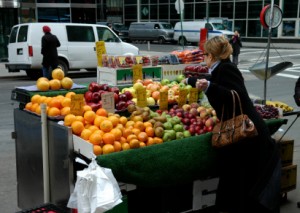
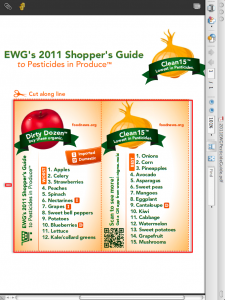
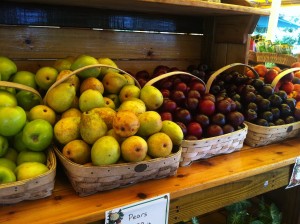
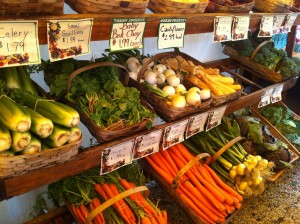
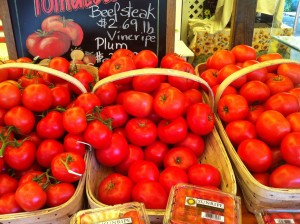
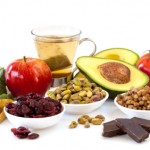
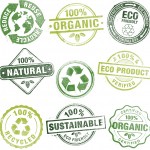
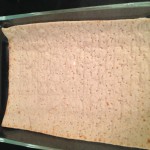
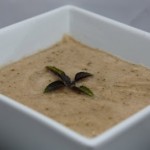
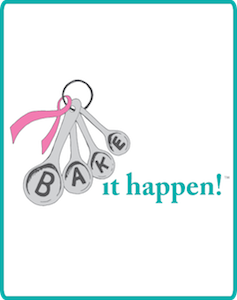


I did not know, thank you for sharing,
Although coming form the Ukraine, where we bought everything from local people, I remember that everything was tastier. Could this be because of pesticides?
Great article.
I will try to shop smarter.
This is such an interesting issue, and very confusing to shoppers. The reality is the produce we find at (a) “good” grocery stores, (b) crummy grocery stores, (c) street vendors, (d) farm stands is likely to be EXACTLY THE SAME conventionally-grown produce, often sourced through the same exact wholesalers. Some of it might be fresher or more wilted (or more/less stylishly presented) due to the store’s particular replenishment cycles and merchandising style. But that’s all window-dressing, it’s actually the same exact produce. It’s just presented/sold in very different settings, so it feels different to us.
The exceptions are: (1) produce labeled “organic” – no matter where sold, if it’s labelled organic, then you can make assumptions about lack of pesticides. (2) Farmer’s markets or farm stands where produce sold is actually grown by the farmers selling it, so you can ask the seller directly about their practices and determine what you care about. May or may not be organic, but you can ask, as you did.
Most rural farm stands are just “outdoor grocery stores,” same as the street vendors and indoor grocery stores. They retail produce they bought through a wholesaler, potentially from all over the world in any season. Tip-off: if you see bananas or avocados …. they’re selling stuff they didn’t grow, because these are tropical fruits, so it’s just an outdoor grocery store. Which is why you see avocados at your farm stand in Long Island …
Bottom line, as you say: If you’re trying to reduce pesticides and chemicals, the best thing is either (a) buy labeled organic, (b) ask the grower directly, or (c) assume it’s conventionally grown (no matter where you’re buying it), and follow the “Dirty Dozen” and “Clean 15” list.
Shari, this is the best and useful blog. We became more conscious of the food we eat about five years ago, and it was all due to my husband’s effort. These are some of the “guidelines” we have adopted when we grocery shop: Any kind of berries, you want to buy organic. Berries are so delicate and the farmers want to try to preserve them for as long as possible. And since they are so delicate, it’s hard to wash off the pesticide. Apples, peaches, nectarines, you can probably get away from eating the pesticide if you peel the skin off. I still try to buy them organic since the skin contains lots of nutrients, nonetheless, organic peaches and nectarines are hard to come by. I also try to buy organic for any “root” vegetables – potatoes, yam/sweet potatoes, etc. I figure, we are eating the roots and they have been in the soil absorbing all the chemicals – cannot be good. So, I am surprised to see sweet potato on the “clean list”. I guess that is good.
My other rule of thumb is, any fruit or vegetables that you have to peel/cut the skin off, are safe to go with the conventional. Thus, it makes sense to see corn, cantaloupe, pineapples, avocado, mangoes, etc., on the “clean” list. I wonder where banana belongs? I have been buying conventional bananas.